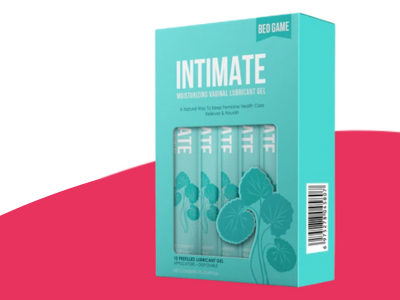Libido means sexual desire, and it naturally rises and falls. The questions below help you notice your current baseline—not to grade you, but to guide next steps. (APA defines “libido” as sexual energy/desire.)
How Long Could You Go Comfortably Without Having of sexual activity Some Kind, either by yourself or with a Partner?
Before you answer, take a breath. The goal is to notice comfort, not willpower. Some people feel fine weeks without sex; others feel restless after a few days—both can be normal depending on context.
If “comfortably” means a long stretch (several weeks) with no frustration, your baseline desire may be lower right now. If two or three days feel uncomfortable, you’re in a higher-desire phase. There’s no universal standard; surveys show wide variation across U.S. adults, and “normal” is what works for you and your relationships.
During This Last Month, How Often Have You Had Sexual Thoughts Involving a Partner?
Think frequency first, not intensity. Count how many days per week your mind wanders to partnered sex—daydreams, flashes, or fantasies all count.
Frequent partnered thoughts (most days per week) suggest stronger dyadic desire—the “with-someone” side of Libido. Measures like the Sexual Desire Inventory (SDI-2) separate partnered (dyadic) from solitary desire because they don’t always move together.
During This Last Month, How Often Would You Have Liked to Engage in Sexual Activity with a Partner?
Now move from thoughts to urges—how often did you want to act on those thoughts with a partner?
The desire to initiate partnered activity several times per week is usually a higher-desire signal.
If you rarely want contact, that may reflect stress, fatigue, relationship dynamics, hormones, meds, or just a quieter season.
Again, SDI-2 research shows desire is multi-dimensional and context-sensitive.

When You Have Sexual Thoughts, How Strong Is Your Desire to Actually Engage in Sexual Activity with a Partner?
Rate your urge—weak, moderate, strong—when a fantasy pops up.
High intensity (thoughts quickly shift to “I want to do something”) indicates higher Libido today. If intensity is low or fades fast, that’s a clue your overall load—stress, sleep debt, intense training—might be tamping desire. Daily diary data ties higher stress to lower concurrent desire in both men and women.
When You See a Person That You Find Sexually Attractive, How Strong Is Your Desire to Act on It?
Think about the real-world triggers—coffee shops, gyms, shows—when attraction appears.
A strong pull to flirt or fantasize suggests a primed desire system. A neutral reaction may simply mean you’re occupied.
Exercise and energy balance matter too: extremes like very high-intensity endurance training can dampen desire in some men, while moderate activity often supports it via mood and sleep.
When You Are in Romantic Situations (Such as a Candle-Lit Dinner, A Walk on the Beach, etc.), How Strong Is Your Sexual Desire?
Picture a recent romantic moment. Did the vibe translate into sexual interest—or just warmth and closeness?
If romantic cues reliably spark desire, your contextual Libido is responsive. If not, focus on upstream levers—rest, stress reduction, and gentle exercise, which systematic reviews link to better sleep and improved sexual desire around activity.
Compared to Other People of Your Age, How Would You Rate Your Desire to Behave Sexually with a Partner?
Social comparison is tricky, but it helps calibrate expectations. Think “roughly lower, about average, or higher.”
Large U.S. surveys show a broad spread in partnered sexual frequency across ages, with many adults reporting little or no intercourse in a given year.
That range reminds us: “average” is wide, and satisfaction matters more than matching a chart. If your desire gap creates distress or conflict, that’s a reason—not a failure—to get support.
During the past 2 months, how often have you masturbated (including touching your genitals for pleasure, inserting something into your vagina, or attempting to have an orgasm)?
Transition: Solitary behavior often tracks desire, but not always. Jot a rough count by week.
Recent U.S. data finds that weekly masturbation is common, especially among men, and correlates with wanting more partnered sex for many women and men. Still, solitary desire can be high even when partnered desire is low; the SDI-2 treats them as related but distinct.
If you explore solo tools, you might browse adult toys to add variety or learn what sensations your body likes. Use plenty of water-based lubricant and start on the lowest setting.
How Strong Is Your Desire to Engage in Sexual Behavior by Yourself?
Separate “how often” from “how strong.” Intensity tells you more than calendar counts.
A strong pull toward solo play typically signals a healthy Libido channel—even in quiet partnered seasons. If desire is present, but you struggle to reach arousal or orgasm, consider simple adjustments: schedule privacy, reduce late-night screens to improve sleep pressure, and experiment with technique pacing.
Curious about products made for penis-owning folks? Some people test sensation patterns with male masturbators that offer different textures and pressure.
When I See a Sexy Movie or Read a Sexy Book, You…
Complete the sentence with your gut response: “I’m turned on,” “I’m indifferent,” or “It depends.”
If erotic media reliably boosts your desire, you’re responsive to cognitive/imagery cues—great feedback for what to do more of. If it rarely registers, focus on bodily cues (massage, exercise, warm baths) that can lift arousal indirectly by lowering stress and improving sleep quality.
PMC
For vulva owners, female sex toys with gentle vibration or suction can pair well with erotic reading; start slow and choose soft silicone with simple controls.

Turning answers into a simple self-score (no judgment, just guidance)
You don’t need a lab test—just a snapshot. Tally your “higher-desire” signals to see where you are today.
Give yourself 1 point for each answer that reflected frequent or strong desire (e.g., frequent fantasies, strong urge to act, romantic moments trigger sex interest, weekly+ solo activity, etc.).
0 points for low/rare interest, or “neutral.”
Your quick read:
7–10 points: Your Libido is running high right now. Guard sleep and recovery, so it stays sustainable.
4–6 points: Middle zone. Small lifestyle tweaks (stress, exercise timing, couple time) can make a visible difference.
0–3 points: Lower-desire phase. That can be perfectly okay; if it’s unwanted or distressing, use the steps below to shift the system.
This DIY check echoes the logic behind validated tools like the SDI-2, which distinguishes solitary and partnered desire to give a fuller picture.
What strengthens Libido (evidence-informed, U.S.-friendly)
Transition: If you’d like more desire—or more dependable desire—change the inputs you can control first, then seek personalized care if needed.
Right-sized exercise. Moderate activity supports mood, sleep, and desire; very intense, high-volume endurance blocks may suppress it for some people, particularly men. Try 20–40 minutes of moderate work most days; keep hard sessions earlier, not within four hours of bedtime.
Sleep first. Better sleep is consistently tied to better sexual function; treat bedtime like a meeting you wouldn’t miss. If snoring, insomnia, or shift work wrecks your nights, talk to a clinician.
Stress off-ramps. Daily diary research shows higher stress links to lower same-day desire; try brief mindfulness, breathwork, or a 10-minute walk after work as a reset.
Curiosity and exploration. Learning your own arousal map helps. For couples, schedule touch that isn’t performance-focused—massages, showers, or cuddling—so pressure drops and desire can reappear.
Couples who want to re-spark novelty sometimes explore couples' sex toys with clear ground rules: no pressure to climax, pause anytime, lots of feedback.
FAQs (50–80 words each)
Is There a “normal” Libido Level?
No single number is “normal.” U.S. surveys show wide variation in desire and sexual frequency by age and life stage. What matters is whether you feel satisfied and whether any mismatch with a partner causes distress. Use the questions above as a compass, not a report card, and adjust sleep, stress, and exercise first. Consult a clinician if low desire persists with distress.
Can Exercise Boost Libido Quickly?
Sometimes. Moderate, regular activity supports sleep and mood, which support desire. Very intense endurance training can suppress desire for some, especially men, so consider intensity and timing. Try finishing vigorous workouts at least four hours before bed and see if sleep and interest improve over two to four weeks.
How Do I Know if It’s Hsdd and Not Just a Phase?
HSDD involves a persistently low desire for distress or interpersonal difficulty. If desire has been low for months and it bothers you, talk to a healthcare professional. They can assess medical, psychological, and relationship factors and suggest therapy, lifestyle changes, or medication when appropriate.
Do Solo Habits Predict Partnered Desire?
Often, but not always. Many people who want more partnered sex also masturbate more, but solitary desire can be strong even when partnered desire is lower. Tools like the SDI-2 separate these domains because they don’t always move together. Track both to see your pattern.
Bottom line: Where your Libido stands today—and what to do next
You just mapped your current desire in ten angles. Now, keep it simple.
Your Libido isn’t a fixed trait; it’s responsive. If your quick score was high, protect sleep and balance training so desire stays steady. If it was mid or low, work the basics—moderate exercise, earlier bedtime, stress off-ramps—and consider gentle exploration (solo or partnered). If distress persists, talk to a clinician. Desire ebbs and flows; the skill is learning how to support your Libido when life gets busy.


